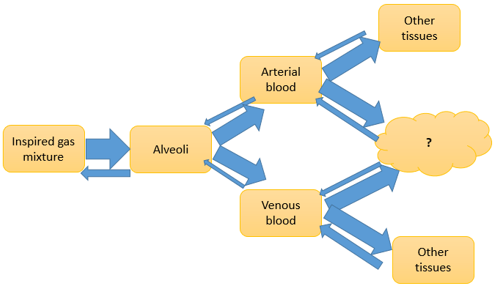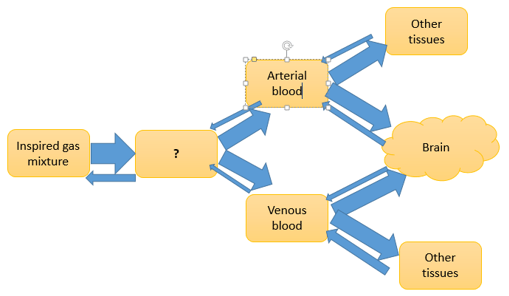This set of Advanced Drug Biotechnology Questions and Answers focuses on “Mechanism of Action of General Anesthetics”.
1. Which of the following will work as an anesthetic?
a) Pantoprazole
b) Amlodipine
c) Cocaine
d) Mannitol
View Answer
Explanation: Pantoprazole is a proton pump inhibitor used to reduce peptic ulcer. Amlodipine is a 2nd line drug for hypertension. Cocaine be the potent anesthetics. But not in general purpose use because of it high demand for drug addiction. Mannitol is an osmotic diuretic. It is used in severe head injury to reduce blood loss.
2. In which of the stage of general anesthesia the movement of the diaphragm is the highest?
a) Plane 1 of stage III
b) Plane 2 of stage III
c) Plane 3 of stage III
d) Plane 4 of stage III
View Answer
Explanation: The patient’s breath is normal in the 1st stage, then in the 2nd stage patient will have a problem in breathing thus will have scattered breathing, in the plane 1 of stage III The patient will breathe heavily, with slow and normal breathing in plane 2. Increase in the concentration of general anesthesia will cause the death of the patient thus in stage IV the patient breathing stops.
3. In which stage of general anesthesia the patient starts vomiting?
a) Stage I ending
b) Stage II ending
c) Stage III ending
d) Stage IV ending
View Answer
Explanation: The patient starts vomiting by the end of stage II, thus the patient has to be given with anti-vomiting medicines.
4. What is the function of general anesthetics?
a) Render a specific portion of the body insensitive to pain
b) Render a full body of the patient insensitive to pain
c) Render a specific organ of the body insensitive to pain
d) Render a specific CNS of the body insensitive to pain
View Answer
Explanation: General anesthesia is a drug that brings about a reversible loss of consciousness. These drugs are generally administered by an anaesthesiologist in order to induce or maintain general anesthesia to facilitate surgery. It helps to prevent the psychological and somatic adverse effect of surgical trauma and create a better condition for surgery.
5. Which of the following is not an inhaled anesthetics?
a) Haloethane
b) Enflurane
c) Isoflurane
d) Diflurane
View Answer
Explanation: Examples of inhaled anesthetics are haloethane, enflurane, isoflurane, desflurane. They are a halogenated compound containing fluorine or bromide simple, small molecules. Inhalational anesthetics refers to the delivery of gases or vapours from the respiratory system to produce anesthesia. A special set of physical principles govern absorption, distribution, and elimination.
6. Which of the following order of inducing cardiac arrhythmias of inhaled anesthetics is correct?
a) F < Br < I < Cl
b) F < Cl < Br < I
c) F > Cl > Br > I
d) Br < I < F < Cl
View Answer
Explanation: Although halogenations of hydrocarbons and ethers increase anesthetic potency, it also increases the potential for inducing cardiac arrhythmias in the following order F < Cl < Br < I. Halogenated methyl ethyl ethers (Enflurane and Isoflurane) are more stable, are more potent, and have better clinical profile than halogenated diethyl ethers.
7. Which of the following is incorrect if we are talking about the essential components of general anesthesia?
a) Analgesia
b) Hypnosis
c) Depression of spinal motor reflexes
d) Muscle contraction
View Answer
Explanation: The most essential components of anesthesia are analgesia that is the perception of pain, hypnosis that is unconsciousness, Depression of spinal motor reflexes and muscle relaxation. These components altogether emphasize the role of immobility.
8. What does the lipid theory tell?
a) Lower the solubility of the anesthetic in water higher potency it has
b) Higher the solubility of the anesthetic in water higher potency it has
c) Higher the solubility of the anesthetic in oil higher potency it has
d) Lower the solubility of the anesthetic in oil higher potency it has
View Answer
Explanation: The lipid theory states that higher the solubility of anesthetics is in oil greater is the potency of that anesthetics. It is based on the fact that anesthetic action is correlated with the oil/gas coefficients. The Protein (Receptor) theory states that based on the fact that anesthetic potency is correlated with the ability of anesthetics to inhibit enzymes activity of a pure, soluble protein. Also, attempts to explain the GABAA receptor is a potential target of anesthetics action.
9. What does the protein (receptor) theory tells us?
a) Anesthetic potency is related to the ability of anesthetic to inhibit enzyme activity
b) Higher the solubility of the anesthetic in water higher potency it has
c) Higher the solubility of the anesthetic in oil higher potency it has
d) Lower the solubility of the anesthetic in oil higher potency it has
View Answer
Explanation: The Protein (Receptor) theory states that based on the fact that anesthetic potency is correlated with the ability of anesthetics to inhibit enzymes activity of a pure, soluble protein. Also, attempts to explain the GABAA receptor is a potential target of anesthetics action. The lipid theory states that higher the solubility of anesthetics is in oil greater is the potency of that anesthetics. It is based on the fact that anesthetic action is correlated with the oil/gas coefficients.
10. Administration of general anesthetics decreases the presynaptic Ca2+ entry.
a) True
b) False
View Answer
Explanation: Administration of general anesthetics decreases the presynaptic Ca2+ entry, thus decreases the neurotransmitter release. It increases postsynaptic Cl– entry and also increases postsynaptic K+ leakage from the cell. Local anesthetics help block conduction. It decreases the axonal Na+ entry thus prevents action potential propagation.
11. Local anesthetics increase the axonal Na+ entry.
a) True
b) False
View Answer
Explanation: Local anesthetics help block conduction. It decreases the axonal Na+ entry thus prevents action potential propagation. Administration of general anesthetics decreases the presynaptic Ca2+ entry, thus decreases the neurotransmitter release. It increases postsynaptic Cl– entry and also increases postsynaptic K+ leakage from the cell.
12. The lower the blood: gas ratio, the more anesthetics will arrive at the brain.
a) True
b) False
View Answer
Explanation: Amount of anesthetics that reaches the brain can be indicated by oil: gas ratio (lipid solubility) and Partial Pressure of anesthetics. The lower the blood: gas ratio, the more anesthetics will arrive at the brain since more gas can dissolve in the blood.
13. Which option will be correct for the market place in the diagram shown below?

a) Alveoli
b) Arterial blood
c) Venous blood
d) Brain
View Answer
Explanation: Partial Pressure in brain quickly equilibrates with partial pressure in arterial blood which has equilibrated with partial pressure perfused alveoli. Furthermore, the depth of anesthesia induced by an inhaled anesthetic depends on the partial pressure of the anesthetics in the brain, and the rate of induction and recovery from anesthesia depends on the rate of change of partial pressure in the brain. These drugs are small lipid-soluble molecules that can cross the alveolar membrane easily. Move into and out of the blood based on the partial pressure gradient.
14. Which option will be correct for the marked place in the diagram shown below?

a) Alveoli
b) Arterial blood
c) Venous blood
d) Brain
View Answer
Explanation: Arterial blood is the fresh blood which has more amount of oxygen in it. After passing the alveolar wall the anesthetic can easily mix with the alveolar blood and then get pump back to the whole body. Furthermore, the depth of anesthesia induced by an inhaled anesthetic depends on the partial pressure of the anesthetics in the brain, and the rate of induction and recovery from anesthesia depends on the rate of change of partial pressure in the brain. These drugs are small lipid-soluble molecules that can cross the alveolar membrane easily. Move into and out of the blood based on the partial pressure gradient.
15. Which option will be correct for the marked place in the diagram shown below?

a) Alveoli
b) Arterial blood
c) Venous blood
d) Brain
View Answer
Explanation: General anesthetics when allowed to inhaled 1st enter the lungs. Then they can readily pass through the alveolar walls and mix with the arterial blood. Furthermore, the depth of anesthesia induced by an inhaled anesthetic depends on the partial pressure of the anesthetics in the brain, and the rate of induction and recovery from anesthesia depends on the rate of change of partial pressure in the brain. These drugs are small lipid-soluble molecules that can cross the alveolar membrane easily. Move into and out of the blood based on the partial pressure gradient.
Sanfoundry Global Education & Learning Series – Drug and Pharmaceutical Biotechnology.
To practice advanced questions and answers on all areas of Drug Biotechnology, here is complete set of 1000+ Multiple Choice Questions and Answers.
If you find a mistake in question / option / answer, kindly take a screenshot and email to [email protected]
- Apply for Biotechnology Internship
- Check Biotechnology Books
- Practice Biotechnology MCQs
- Check Drug and Pharmaceutical Biotechnology Books
